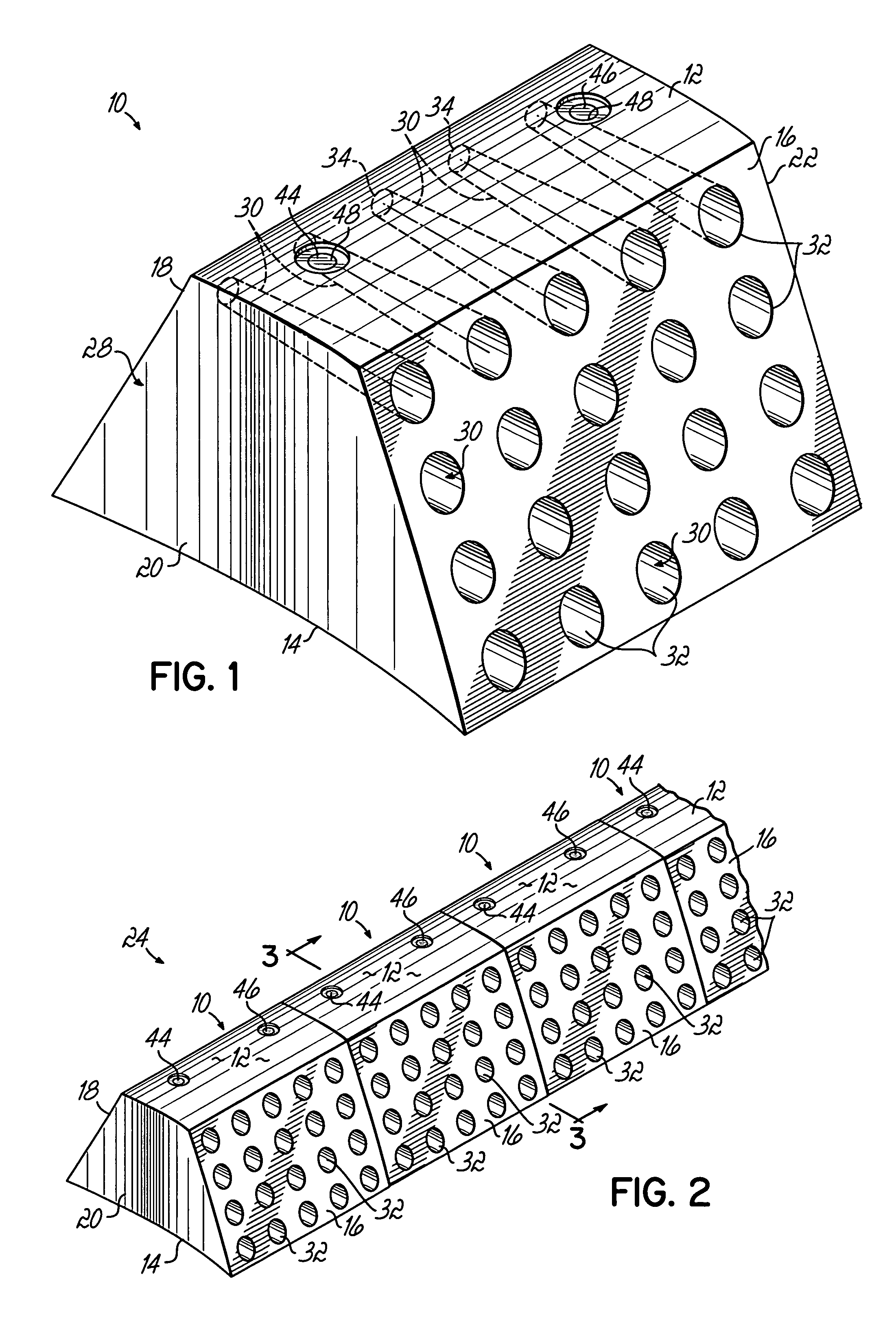Shoreline erosion barrier
- Summary
- Abstract
- Description
- Claims
- Application Information
AI Technical Summary
Benefits of technology
Problems solved by technology
Method used
Image
Examples
Embodiment Construction
[0021]FIG. 1 depicts an exemplary erosion control barrier 10, according to the present invention. In this embodiment, the barrier has the general shape of a trapezoidal prism with substantially horizontal top and bottom walls 12, 14, first and second opposing, inclined sidewalls 16, 18, and first and second opposing end walls 20, 22. The first and second sidewalls 16, 18 are inclined toward one another, from the bottom wall 14 toward the top wall 12, to form the generally trapezoidal shape. While the first and second end walls 20, 22 are substantially vertically oriented, they are formed as convex and concave arcuate surfaces that extend between the first and second sidewalls 16, 18, respectively. The convex and concave surfaces are complementary so that multiple barriers 10 may be aligned in an end-to-end fashion with their first and second end walls 20, 22 engaging one another to form a barrier wall 24, as depicted in FIGS. 2, 4 and 8, and described more fully below.
[0022]A plural...
PUM
 Login to View More
Login to View More Abstract
Description
Claims
Application Information
 Login to View More
Login to View More - R&D
- Intellectual Property
- Life Sciences
- Materials
- Tech Scout
- Unparalleled Data Quality
- Higher Quality Content
- 60% Fewer Hallucinations
Browse by: Latest US Patents, China's latest patents, Technical Efficacy Thesaurus, Application Domain, Technology Topic, Popular Technical Reports.
© 2025 PatSnap. All rights reserved.Legal|Privacy policy|Modern Slavery Act Transparency Statement|Sitemap|About US| Contact US: help@patsnap.com



